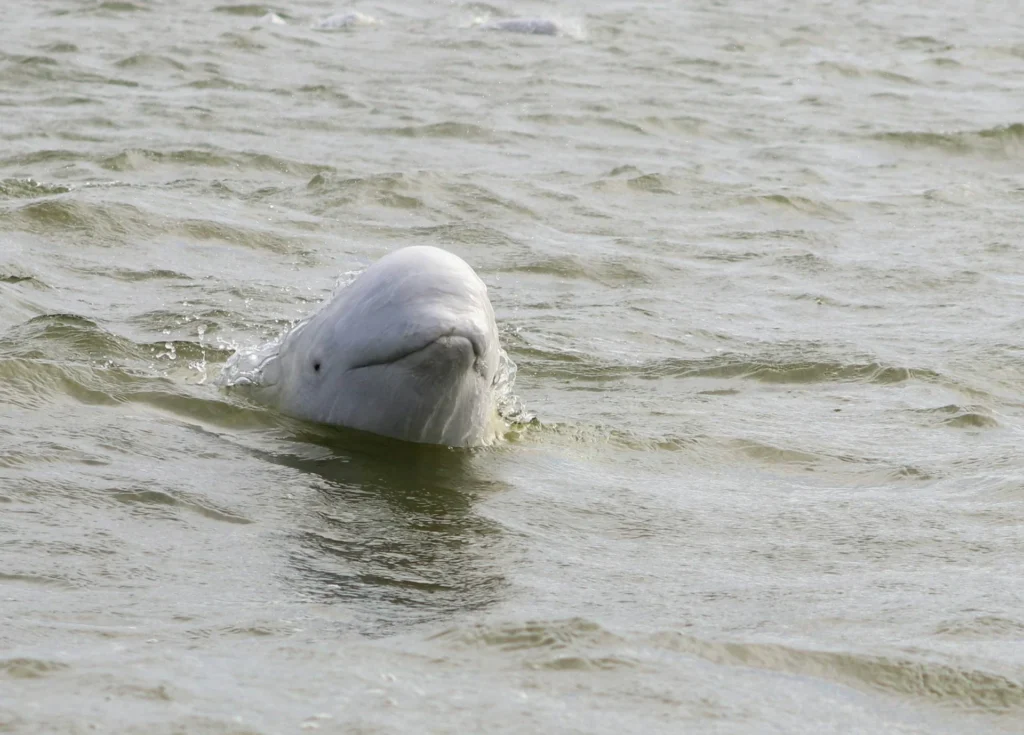Beluga Point, located about 12 miles south of Anchorage, Alaska, is a prime shore-based location to see beluga whales. These white whales are commonly spotted here because the Turnagain Arm provides rich feeding grounds. The population of belugas in Cook Inlet has hovered between 300 to 375 whales since 2000. Knowing the best time to see beluga whales at Beluga Point helps visitors plan a successful and focused trip.
When Are Beluga Whales Present at Beluga Point?

Beluga whale presence at Beluga Point varies seasonally, based mainly on feeding and migration patterns.
- Spring Sightings (March-May)
- Summer Sightings (June-August)
- Fall and Winter Sightings (September-February)
Belugas start arriving in Turnagain Arm in March and April. Sightings during spring tend to be less frequent but increase as fish return to spawn. This period marks the beginning of beluga activity near the shore.
Summer is the peak season for beluga whales at Beluga Point. From June through August, large pods gather to feed in the nutrient-rich waters. This period offers the highest chances for close and consistent sightings.
Beluga sightings sharply decline after August. By fall, most whales migrate out of the area to deeper waters. Sightings from September to February are rare, making this a less ideal time for viewing.
Best Time of Day to See Beluga Whales
Belugas are most active during:
- Early Morning: Calm water and low human activity improve sighting chances.
- Late Afternoon: Feeding increases again, providing good opportunities.
Midday hours often have more glare and boat traffic, which can reduce visibility.
Environmental Factors Affecting Beluga Sightings
Key environmental influences include:
- Water Temperature: Cooler, nutrient-rich waters attract belugas.
- Tides: Strong tidal currents bring fish closer to shore, increasing whale activity.
- Weather: Clear, calm days enhance visibility; fog and rain reduce it.
How to Access Beluga Point for Whale Watching?

Beluga Point is easily accessible via the Seward Highway. From Anchorage, it’s roughly a 30-minute drive south. The designated turnout has parking and clear viewing areas, making it a convenient spot for shore-based whale watching.
Tips for Watching Beluga Whales Successfully
- Bring binoculars and a zoom camera.
- Dress in layers for variable weather.
- Arrive early for the best viewing spots.
- Stay quiet and patient to avoid disturbing whales.
- Use local resources or visitor centers for recent sighting updates.
Conclusion
The best time to see beluga whales at Beluga Point is during summer months, especially June to August, focusing on early mornings and late afternoons. Being aware of environmental factors and prepared with the right gear ensures a rewarding experience. Plan your visit accordingly to catch these incredible animals in action.
FAQs
July through August offers the highest chance for sightings.
Yes, Beluga Point provides excellent shore-based viewing.
No, sightings depend on whale presence and environmental factors.
No, it’s a public access area with free parking.
Binoculars, a camera, weather-appropriate clothing, and patience.











